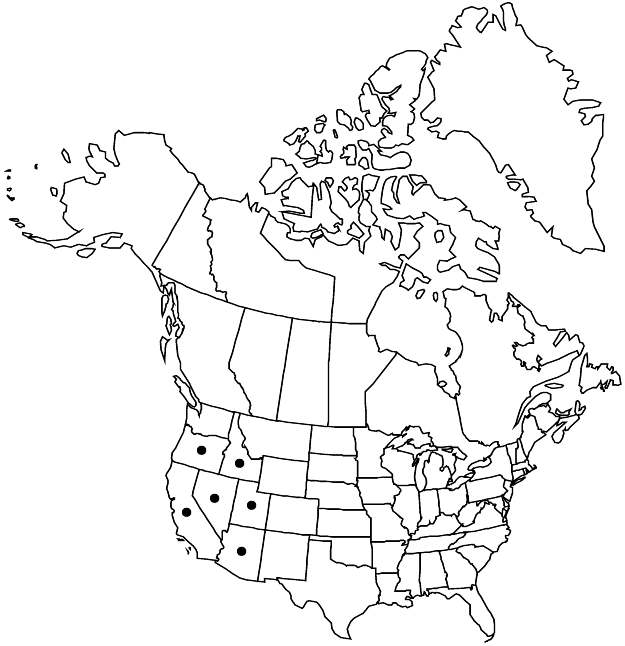Eriogonum nidularium
Contr. U.S. Natl. Herb. 4: 186. 1893.
Herbs, erect to slightly spreading, 0.5–1.5 (–2) dm, floccose to tomentose, greenish to tawny. Stems: aerial flowering-stems mostly erect, 0.05–0.3 dm, floccose to tomentose. Leaves basal; petiole 1–3 (–5) cm, tomentose; blade rounded to cordate, 1–2 (–2.5) × 1–2 (–2.5) cm, densely white-tomentose abaxially, tomentose to floccose and occasionally greenish adaxially. Inflorescences narrowly cymose, distally uniparous due to suppression of secondary branches, diffuse, 5–15 (–20) × 5–20 (–30) cm; branches inwardly curved distally, floccose to tomentose; bracts 0.5–3 × 1–3 mm. Peduncles absent. Involucres appressed to branches, cylindric-turbinate, 1–1.3 × 0.5–0.7 mm, floccose; teeth 5, erect, 0.1–0.2 mm. Flowers 1–3 (–3.5) mm; perianth pale-yellow or yellow, rarely creamy white, becoming red, glabrous; tepals dimorphic, those of outer whorl broadly fan-shaped, those of inner whorl oblanceolate; stamens included, 1–1.5 mm; filaments pilose proximally. Achenes light-brown, 3-gonous, 1–1.3 mm.
Phenology: Flowering Mar–Oct.
Habitat: Sandy to gravelly washes, flats, and slopes, saltbush, greasewood, creosote bush, blackbrush, and sagebrush communities, pinyon and/or juniper woodlands
Elevation: (300-)500-2300(-2700) m
Distribution

Ariz., Calif., Idaho, Nev., Oreg., Utah.
Discussion
Eriogonum nidularium is common and widespread, sometimes becoming weedy, especially along roadsides. It is basically a species of the Great Basin and the Mojave Desert, found mainly in eastern California and Nevada, extending into northwestern Arizona, southwestern Idaho, southeastern Oregon, and southwestern Utah. The numerous, often distinctive, incurved inflorescence branches resemble a bird nest, as reflected in the common name.
Selected References
None.
Lower Taxa
"narrowing" is not a number."dm" is not declared as a valid unit of measurement for this property."dm" is not declared as a valid unit of measurement for this property.